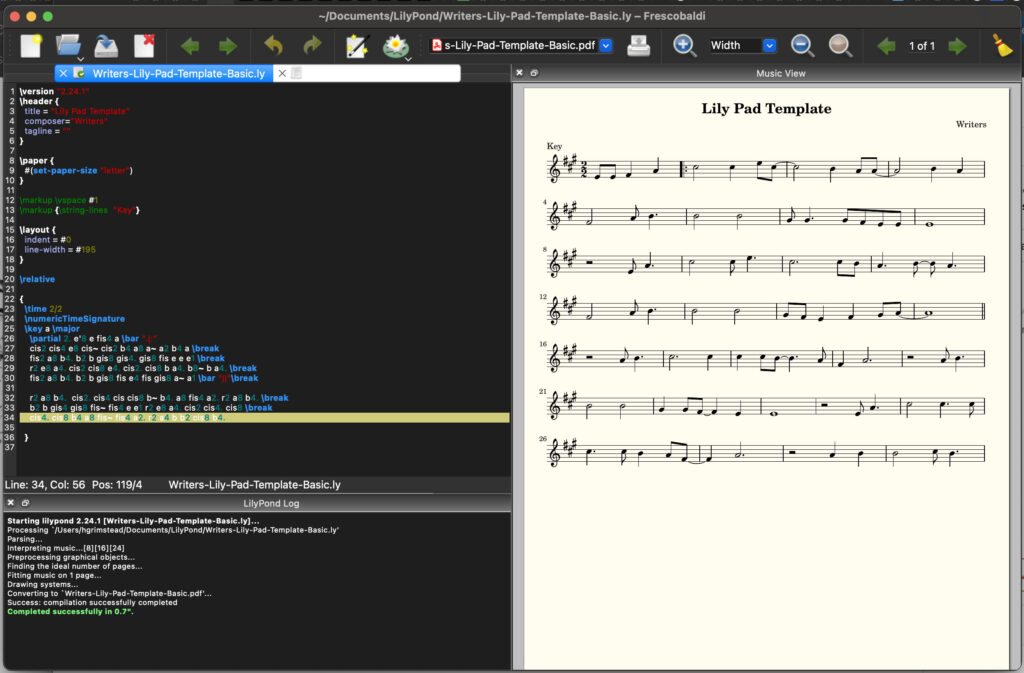One skill I’ve been slowly developing alongside playing the fiddle is transcribing music—creating sheet music for the tunes I learn. Writing a tune down can be incredibly helpful for remembering it later, especially when I haven’t played it in a while.
It’s difficult to capture all the nuances of old-time fiddle tunes in standard notation. The subtle slides, the ornamentation, the rhythm that sits somewhere between straight eighth notes and a swing—these elements that give fiddle music its character don’t translate perfectly to dots on a page. Old-time music has a long tradition of being passed down by ear, and in some circles, relying on sheet music is frowned upon.
That said, notation can still serve as a helpful reminder for those of us who choose to use it. Think of it as creating a rough map to preserve the essential skeleton of the melody and give you the basic structure to jog your memory. Transcribing is also a helpful way to create and remember variations on a tune. When you’re working out a melody note by note, you naturally start thinking about alternate phrasing or ornamentation.
Software to Write Sheet Music
I have limited experience transcribing music, but the free software I use is called Lilypond. Unlike visual editors, Lilypond works more like coding—you type text commands with the music notes, and the program generates sheet music. You can find Lilypond at http://lilypond.org/. It’s completely free and produces professional-quality notation.
I’ll be honest: there’s a bit of a learning curve with Lilypond. The text-based approach can feel strange at first. You’ll need to learn the syntax for notes, rhythms, key signatures, and other musical elements. But once you get the hang of the basics, it can be quite efficient and powerful. There is also extensive documentation available through the Lilypond website. The advantage of Lilypond’s approach is that it separates the content (the actual notes and rhythms) from the formatting. You focus on getting the music right, and Lilypond handles making it look good on the page.
Starter Template
To help you get started, I’ve created two basic Lilypond templates that includes the barebones structure I start with when notating a tune. This template sets up the essential elements—title, key signature, time signature, and notes. These files can be opened in Frescobaldi, a free software editor for LilyPond music files.
Download the templates (zip file)
- Writers-Lily-Pad-Template-Basic.ly – Lilypond file
- Writers-Lily-Pad-Template-Basic.pdf – example output
- Writers-Lily-Pad-Template.ly – Lilypond file
- Writers-Lily-Pad-Template.ly – example output
The basic file is just that — the core sections for a simple tune. Just replace the notes with your tune. You can reference the existing notes to see examples of the notation. The second file includes a line for chords and an alternate ending.
While transcribing music takes time and practice, I’ve found it worthwhile to learn. It forces me to listen more carefully to the details of a tune and creates a reference I can return to later.

